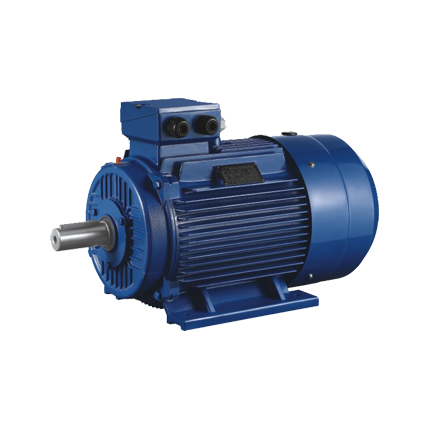Summary:1. What is the difference between a single-phase motor and a three-phase motor
single phase motor
There are two coils in a single-phase motor, the primary coil and the secondary coil. When the single-phase sinusoidal current passes through the main......
single phase motor
There are two coils in a single-phase motor, the primary coil and the secondary coil. When the single-phase sinusoidal current passes through the main coil, the main coil will generate an alternating pulsating magnetic field. The strength of this magnetic field changes with time as the sinusoidal current changes, but its direction is always 1-3.
If there is no force provided by the other coils, the motor will not turn after 90°. If you want it to rotate, you must also add a force perpendicular to the direction of the main coil, which is provided by the start coil, that is, the secondary coil.
In order for the secondary coil to provide a force perpendicular to the direction of the primary coil, another phase current must be fed to the secondary coil. If the same phase current is passed through, then the direction of the force they generate is also the same. But only single-phase electricity, what to do?
At this time, it is necessary to use capacitive phase shifting. Simply put, it is to connect the capacitor in series with the circuit that needs to be phase-shifted, so that the current phase changes. After the single-phase alternating current is phase-shifted, its waveform becomes the following figure.
Finally, put it together, the motor wiring diagram is as shown below. First, sinusoidal alternating current comes in from point A, part of it supplies power to the main coil, and the other part is phase-shifted through the capacitor. Since the phases of the two-phase electricity are in tandem, the magnetic field force generated by the coil will also be in tandem. In this way, the main coil can be pushed once, then the secondary coil can be pushed, and finally it can be rotated.
If you want the motor to reverse, you only need to change the power cord connected to point A to point B in the above picture, and the power cord connected to point C will not move.
Because before the change, the main coil used sinusoidal alternating current with zero phase, and the secondary coil used sinusoidal alternating current after phase shifting. After the power cord is changed to point B, the secondary coil uses sinusoidal alternating current with zero phase, while the main coil uses sinusoidal alternating current after phase shifting. If the current phase of the two coils changes, the direction of the magnetic field force they generate will also change, and the rotation will also change.
three-phase motor
The three-phase motor uses a three-phase AC power supply, and their phase difference is 120° due to the three-phase AC power. When the stator winding is connected to three-phase alternating current, a rotating magnetic field will be generated in the stator. When the rotating magnetic field cuts the rotor winding, the rotor winding will generate an induced current, and the induced current will be subjected to electromagnetic force in the rotating magnetic field, so that it will rotate.
Three-phase motors use three-phase power supplies that are 120° out of phase. We can simply understand that a three-phase motor is equivalent to three people standing at three different angles to push the rotor. The single-phase motor adopts single-phase power supply and capacitor, and the phase difference of the main and auxiliary coils is 90°. We can simply understand that a single-phase motor is equivalent to two people standing at two different angles to push the rotor.
Therefore, the torque (rotation force) of a three-phase motor with the same power is larger than that of a single-phase motor.
Generally, if there is a three-phase power supply, try to use a three-phase motor, because the three-phase motor with the same power has the advantages of smaller size, lighter weight, lower noise, lower price and higher torque than the single-phase motor.

YE3 SERIES LRON SHELL ULTRA-HIGH EFFICIENCYTHREE-PHASE ASYNCHRONOUS MOTOR
Product Features
YE3 series ultra-high-efficiency motors are fullyenclosed three-phase asynchronous motors
manufactured with new materials and new processes.
lt has beautiful appearance, high efficiency andenergysaving, F-class insulation, IP55 protection level,low motor noise, small vibration, and reliable operation.lt is a generaluse place that requires energy-savingcontinuous operation and can work frequently.Suchas fans, pumps,etc.


![]() NO.1828 Haichang Road, Binhai Industrial Park,
Jiaojiang District, Taizhou City, Zhejiang
Province,China
NO.1828 Haichang Road, Binhai Industrial Park,
Jiaojiang District, Taizhou City, Zhejiang
Province,China
![]() Export department:
Export department: ![]() General manager:+86-13606763355
General manager:+86-13606763355

 English
English 中文简体
中文简体 Deutsch
Deutsch عربى
عربى Español
Español